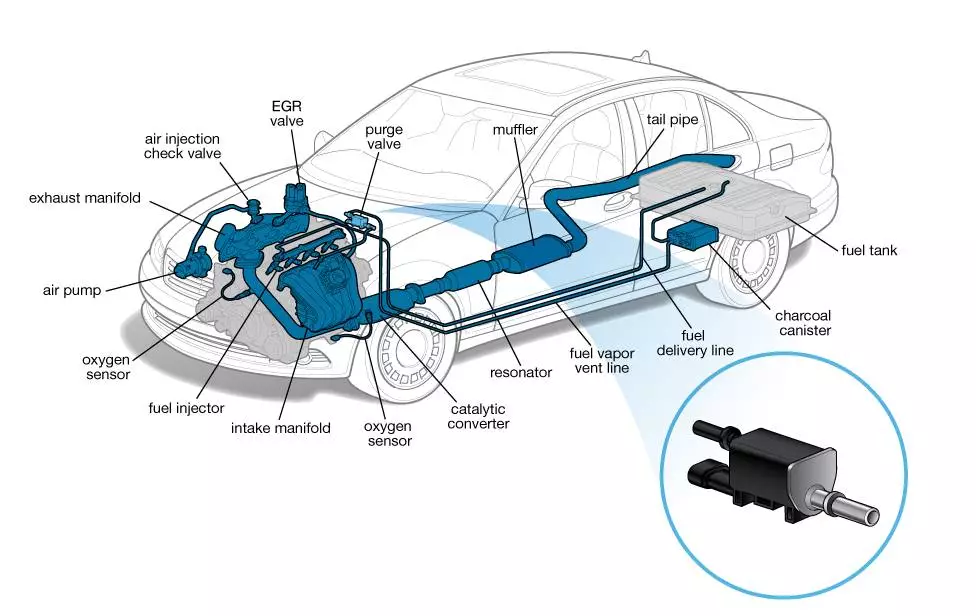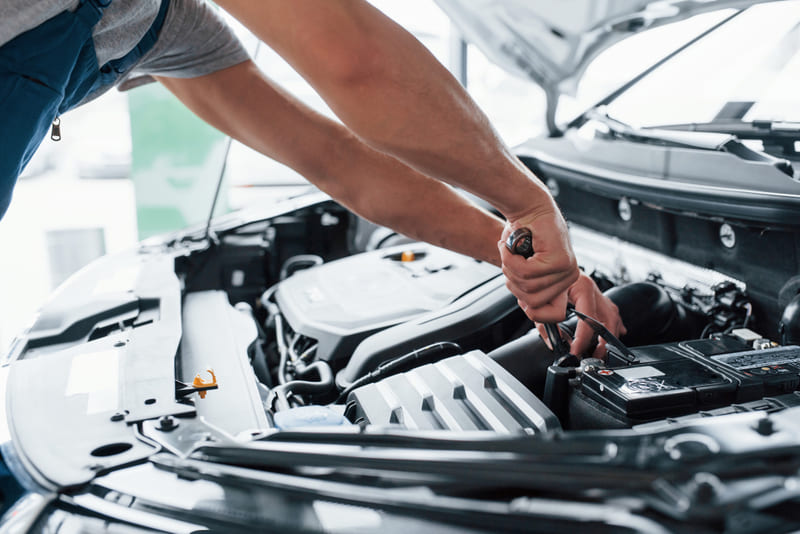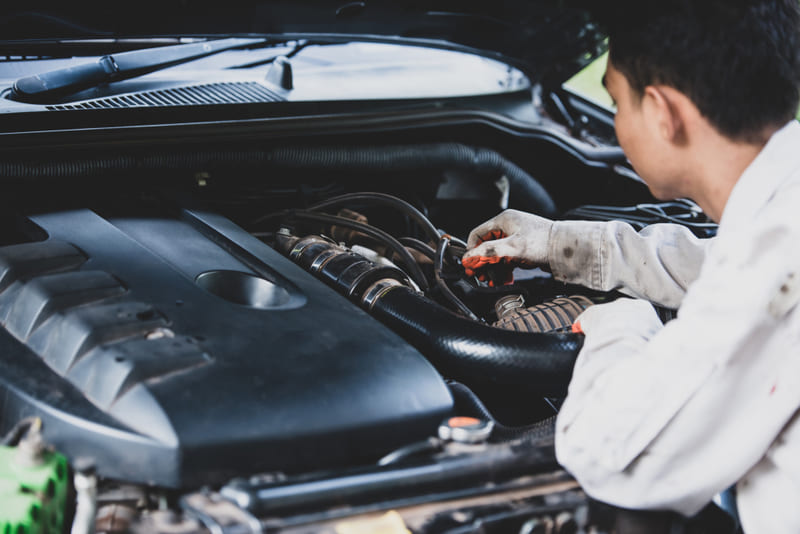The engine is the most important part of a car. It’s what makes the car move forward, and it’s what uses up fuel. Over time, your car’s engine can become dirty and full of grime. As a result, the car’s performance and fuel efficiency can be decreased. In extreme cases, it can even cause engine failure. One of the most important engine parts to keep clean is the purge solenoid valve. This valve controls the flow of fuel vapor from the engine to the exhaust system.
If the purge solenoid valve becomes clogged, it can cause a build-up of pressure in the engine, leading to decreased performance and fuel efficiency. In some cases, it can even cause the engine to stall. To avoid these problems, be sure to have your purge solenoid valve cleaned regularly by a qualified mechanic.
If you want to know how to clean a purge solenoid valve, this article will help you. But before getting into the step-by-step guide to cleaning a purge valve, let’s first know what a purge valve is on a car.
What is a Purge Valve?

A car purge valve is a device that helps remove air from the fuel system. Fuel systems tend to develop air pockets, which can lead to poor engine performance. A purge valve helps eliminate these air pockets, allowing the engine to run more smoothly. A purge valve is usually located near the fuel injectors or carburetors. It is usually made of metal or plastic and can be opened and closed by an electric solenoid.
The Important Parts of a Purge Valve

A Car Purge Valve consists of 3 main parts:
- Casing: The casing is made of plastic and it protects the internal solenoid and plunger.
- Electrical Plug: The electrical plug is used to provide power to the solenoid and it is also used to activate or deactivate the purge valve.
- Internal Solenoid and Plunger: The internal solenoid and plunger are used to open and close the purge valve.
Three Most Common Purge Valve Problems Revealed
The three main problems that a purge solenoid valve may have are:
- The casing and its inlet and outlet pipes could be cracked. If the casing is cracked, then the liquid or gas being purged will escape from the valve.
- The coil could be damaged. If this happens, then it will not be able to create a current that opens or closes the valve.
- Debris or carbon build-up inside the valve interferes with its ability to open and close properly.
All three of these problems can cause the valve to not function as it should.
Step-by-step Guide to Clean the Purge Valve Without Opening

Cleaning the purge solenoid valve on your car is a quick and easy way to help improve its performance. You don’t have to open the valve to clean it – in fact, you may not even need to remove it from the car! This guide will show you how to clean your purge solenoid valve quickly and easily.
Step 1: Use the Sprayer
Locate the tubes of the purge solenoid valve and clean them with a carb cleaning or Mass Air Flow Sensor cleaning spray.
Step 2: Use the Hand Movement
Cover the tubes’ ends with your fingers and shake for a few seconds. Then leave it like that and wait for the clearer to do its work.
Step 3: Remove the Liquid
After several minutes, remove your fingers and let the cleaner drain out. You will notice the color of the cleaning liquid has become darker as it is now mixed with the dirt and debris of the valve’s tubes. Repeat the second step a few more times until you notice the drained-out liquid is not dark anymore.
Step 4: Spray Contact Cleaner
Spray a good contact cleaner on the purge solenoid valve’s connector and the car switch to prevent any sort of contamination.
Step 5: Let it Dry
Start the car engine only after everything gets completely dry.
READ ALSO: How to Test Purge Valve With a Multimeter
Deep Clean Your Purge Valve: A Quick 5-Step Process
You don’t often need to open the purge solenoid valve on your car, but when you do, it’s important to know how to do it properly. This guide will show you how to deep clean the purge solenoid valve and get your car engine running like new again.
Step 1: Identify the Purge Solenoid Valve
Start by checking your vehicle’s manual to pinpoint the purge solenoid valve. It’s usually located in the engine bay, either near the charcoal canister or along the engine’s intake system. Take a moment to familiarize yourself with the valve’s appearance and connections before proceeding.
Step 2: Disconnect the Valve Safely
Before touching the valve, ensure the vehicle is off and disconnect the negative terminal of your battery to avoid electrical issues. Carefully detach the purge valve from its mount using a wrench or socket. Remove the vacuum lines and electrical connectors gently to prevent any damage.
Step 3: Clean the Valve Thoroughly
Wear gloves and safety goggles for protection. Use a high-quality carburetor or throttle body cleaner to spray into the valve openings. Let the cleaner sit for a few minutes to break down stubborn grime. Shake the valve lightly to loosen debris and ensure the cleaner reaches all internal components.
Step 4: Dry and Wipe the Valve
Once the dirt is loosened, wipe the valve’s exterior and visible internal parts with a clean, lint-free cloth. Ensure all moisture is removed and allow the valve to air dry completely before reinstallation.
Step 5: Reinstall and Test
Reconnect the valve to its mounting point, ensuring the vacuum lines and electrical connectors are secure. Tighten any bolts or fittings as needed. Finally, reconnect the battery and start the vehicle to check for smooth operation. Your purge solenoid valve is now clean and ready to function efficiently!
Final thoughts,
Cleaning the engine parts, like the purge solenoid valve, isn’t as tricky as it might seem. Regularly taking care of these small tasks can make a big difference in how smoothly your car runs. By following the simple steps above, you can clean the valve quickly and without much hassle. So, what are you waiting for? Get started and have your car back on the road in no time!
FAQs
1. How to clean pure solenoid valve without removing it
Turn off power and fluid supply, flush the valve with clean fluid or air, use a compatible cleaning agent if needed, and cycle the valve to dislodge debris.
2. What is the common problem of solenoid valves?
The common problems of solenoid valves include coil burnout, sticking due to debris, internal leaks, failure to open/close, overheating, corrosion, and pressure imbalances. Regular maintenance and proper installation can help prevent these issues.
2. How long do purge valves last?
A purge valve can last the life of a vehicle under ideal conditions, but in real-world use, it often doesn’t.
3. How long can you drive with a bad canister purge valve?
Yes, you can drive with a bad canister purge valve. In fact, a bad canister purge valve won’t cause your car to malfunction or stop running. However, it may cause your car to run a bit less efficiently and could increase emissions.
4. Can you bypass the charcoal canister ?
Yes, but when you will try to bypass the charcoal canister then you should do it carefully otherwise it may chance to leak the fuel tank.
5. Can you fix a purge valve yourself?
Yes, you can certainly fix a purge valve yourself – though it may take some time and patience.
